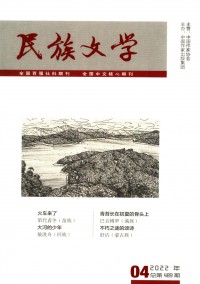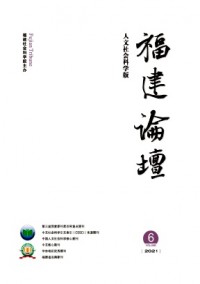大雪節氣諺語
前言:想要寫出一篇令人眼前一亮的文章嗎?我們特意為您整理了5篇大雪節氣諺語范文,相信會為您的寫作帶來幫助,發現更多的寫作思路和靈感。

大雪節氣諺語范文第1篇
大雪三白,有益菜麥。
冬無雪,麥不結。
麥澆小,谷澆老,雪蓋麥苗收成好。
下雪不冷化雪冷。
化雪地結冰,上路要慢行。
雨水泥濘濺一身,冰地摔倒傷骨筋。
大霧不過三,過三十八天,十八不下一冬干。
大雪封河。
大雪封了河,船民另找活;大雪河未封,船只照常通。
半上午插犁,半下午停,中午前后把地耕。
大雪封地一薄層,拖拉機還能把地耕。
機器不怕用,就怕用后隨便扔。
機器用罷跟檢修,日后再用就順手。
大雪紛紛落,明年吃饃饃。
積雪如積糧。
冬雪一層面,春雨滿囤糧。
今年麥子雪里睡,明年枕著饅頭睡。
麥蓋三層被,頭枕饃饃睡。
今冬大雪飄,來年收成好。
今冬雪不斷,明年吃白面。
今冬麥蓋一尺被,明年饅頭如山堆。
雪在田,麥在倉。
雪多下,麥不差。
大雪節氣諺語范文第2篇
半上午插犁,半下午停,中午前后把地耕。
大雪封地一薄層,拖拉機還能把地耕。
機器不怕用,就怕用后隨便扔。
機器用罷跟檢修,日后再用就順手。
光會用,不會修,到老是個離八頭。
一遍生,二遍熟,三遍不用問師傅。
熟能生巧,巧能生精。
牛羊啃一層,最少減一成。
冬天不護樹,栽上保不住。
冬天把糞攢,來年好種田。
天氣漸寒,畜舍堵嚴。
定時、定量,先草后料,少給勤添。
冬天驟熱下大雪。
大雪紛紛落,明年吃饃饃。
積雪如積糧。
冬雪一層面,春雨滿囤糧。
今年麥子雪里睡,明年枕著饅頭睡。
麥蓋三層被,頭枕饃饃睡。
今冬大雪飄,來年收成好。
今冬雪不斷,明年吃白面。
今冬麥蓋一尺被,明年饅頭如山堆。
雪在田,麥在倉。
雪多下,麥不差。
雪蓋山頭一半,麥子多打一石。
雪有三分肥。
白雪堆禾塘,明年谷滿倉。
大雪三白,有益菜麥。
冬無雪,麥不結。
麥澆小,谷澆老,雪蓋麥苗收成好。
下雪不冷化雪冷。
化雪地結冰,上路要慢行。
雨水泥濘濺一身,冰地摔倒傷骨筋。
大霧不過三,過三十八天,十八不下一冬干。
大雪節氣諺語范文第3篇
結構式摘要之所以受青睞在于以下幾點:便于作者概括論文內容,又不必費心去構思詞句的起承轉合;層次清楚,一目了然,便于讀者和審稿人對論文的價值作出判斷;有較定型的格式和項目,不致造成寫摘要時的遺漏,因而信息量完備;有利于查詢和/或選擇性索取.
1 結構式摘要的類型結構式摘要由目的、方法、結果和結論4部分組成.國內雜志無論中文版還是英文版,都是采用4段式,但形式上不分段.國外雜志有相當一部分往往增加Background, Design,Setting (研究的地點/環境/場所或等級、條件), Main outcome measures (主要檢查項目)等.表示“目的”;的詞最常用的是Objective,也有用Purpose或Aim等的.相應于方法的一項,也可以是Patients、Subjects或Participants或Interventions.
2 摘要中表示“目的”;的常用詞2.1 Aim(1)名詞用法.
The aim of this investigation/study/ the present study was to…; The aims of thisstudy were: to…; Our aim is to…。主任(2)動詞用法①作及物動詞用,主動態后接動詞不定式: This study aimed to…/ We aimed to…/This study aims to…②被動態用法,介詞用at,后接動名詞: This study was aimed at documenting the ex-istence of suicidal behavior…; The research is aimed at identifying…③作不及物動詞用,介詞用at,后接動名詞:
The goal of this investigation was to…Goal一詞的含義、用法及其句式22跟名詞aim完全一樣,例句從略.
2.4 Intend(人作主語用主動態,事物作主語用被動態)This report/paper is intended to…/These findings are intended to…This three-group design / This study was intended to…With this study/ Therefore / In this study we intended to test the hypothesis that,…It is intended to remind the reader of this pathology which is often forgotten becauseof its rarity.
2.5 Intent(不太常用)The intent of the study was to…
2.6 PurposePurpose的用法同aim,不復舉例. (參見2.1)但在for the purpose (of)這一固定結構中,一般不用aim替換其中的purpose.如:
…is described for the purpose of…
2.7 其它動詞(多用被動態)(1) Carry outThe retrospective study / An experimental study / An investigation was carried out toevaluate….
We carried out this study to determine….
(2) ConductA (…) study/ survey / An experiment was conducted to evaluate/ establish/ investi-gate….
Studies were conducted to determine whether….
The present study was conducted to elucidate the reason for this phenomenon.
We conducted a study to…(3) DevelopA…method…was developed to (動詞不定式) /for (名詞或動名詞)….
An on-line thermospray liquid chromatography/mass spectrometry method was devel-oped to….
We have also developed methods for the analysis of….
We have developed a rapid nonradioactive colorimetric assay that….
(4) DesignThis study / The present study / Our study was designed to….
We also designed an in vitro study to….
(5) PerformThis study was performed to determine….
王征愛:生物醫學期刊英語結構式摘要的類型及常用詞的用法Immunohistochemistry was performed on 29 (39%) foci to rule out adenocarcinoma.
We performed a prospective study in our teaching hospital to determine….
(6) UndertakeHuman studies have been undertaken to test this thesis.
A…clinical trial was undertaken in order to compare….
A…review/ study was undertaken to evaluate/ assess….
This retrospective study was undertaken to: determine/identify/formulate a diagnos-tic approach that….
…, we have undertaken a study to identify….
For this reason an attempt was undertaken for quantitative evaluation of….
3 幾組同義或近義詞的用法區別3.1 Among與betweenAmong表示3者之間, between表示2者之間(例句參見Difference);但表示比較時,哪怕有3種以上比較的對象,也常常用between來表示這一組被比較的事物中每2者之間的區別.如:
Among 4 men in whom erectile impotence comprised one of the indications for inter-vention, 3 reported sustained restoration of sexual function.
To examine pregnancy outcome among women age 40 years and older.
There is a slight difference between these four synonyms.
No major clinical differences were noted among ANA+ SLE patients with versusthose without ENA. (此句用among是不對的,應改為between)3.2 By跟with的區別(1)一般地說, with后跟有形物質的名詞, by后面接表示概念一類的抽象名詞,該名詞代表的事物看不見、摸不著.如:
PCR products were detected by gel electrophoresis and dot-blot hybridization.
Cultured fibroblast-like synoviocytes (FLS) were stimulated with interleukin-1 (IL-1) in the presence or absence of adenosine receptor agonists.
(2)介詞with和by在很多情況下,可跟using互換:
Immunoreactive MMPs were measured using (by) specific enzyme-linked immunosor-bent assays, and gene expression was assessed by Northern blot analysis.
T cell receptor (TCR) beta-chain sequences were amplified by reverse transcriptase-polymerase chain reaction, using (with) TCR BV and BJ gene segment-specific primersets.
Clinical data were abstracted for all patients, and diagnoses (were) established using(by) American College of Rheumatology criteria.
3.3 Case與patientCase指的是某種疾病的例子,不作人講,而patient則是指患有某種疾病的人,且接受某種治療.不少作者不懂得case與patient是有區別的,但常在該用patient的地方用了38中山大學學報論叢
1997年case,如Case 1 was treated for 6 weeks with….應改為: Patient 1 was treated for…或Incase 1, the patient was treated for…;但Case 1 was analysed則是對的.它們的另一個區別是所跟介詞不同: patient總是與with連用, case幾乎一定要與of為伍,例如:
HLA classⅠantigens were typed serologically, and classⅡantigens molecularly, insamples taken from 33 patients with AS, 30 patients with ReA, and 55 healthy HLA-B27positive controls.
現在有種趨勢,即去掉with,而把with后的疾病名稱提前作patient的定語,改介詞結構為復合名詞.如RA patients have an abnormality in the homeostasis of CD4+ T cells,characterized by the emergence of clonally proliferating populations.上面的結構可改寫為AS patients、ReA patients,這樣比較簡潔.但若病名很長,還是以with結構為宜.
3.4 Diagnose(s)與diagnosis表達“某病人患了什么病”;,不能說“He was diagnosed as…”;,而應當說“He was diag-nosed having…",或" He had a diagnosis/diagnoses of…”;,請看下面的例子.
Four of the 5 patients had clinical diagnoses of gonococcal arthritis; the other patienthad (省略diagnoses of) an unexplained monarthritis.
…patients endoscopically diagnosed as having Barret s esophagus with high-gradedysplasia.
He was diagnosed (as) having appendicitis.
“病人”;不是“病”;!只有case或disease, illness可以to be diagnosed as,如:
Sixty-three cases were clinically diagnosed (as) acute NANB hepatitis.
The doctor diagnosed the illness/disease as pneumonia.醫生把這病診斷為肝炎.
作出診斷動詞用make,確定診斷動詞用estabolish.例見方法部分.
3.5 Difference當我們講某兩種事物在某方面有無差別時,總是用between引出比較的對象,用in/for引出比較的方面,如:
In this study,no significant differences were found betweenblack and white patients in(方面) .
The difference in response between patients and controls on days 2 and 3 are statisti-cally significant.如果把in response換成of responses就不好.更不能把此句子寫成Thedifferences between the response of patients and controls…Statistical analysis showed no difference between cases and control patients for….
There was no major difference between the HLA alleles in AS and ReA patients,….
(此句between與in應該互換位置)介詞短語in引出的短語也可由一個較短的修飾語代替,單個詞前置,of短語后置:Clin-ical differences between SLE patients with and those without anti-ENA antibodies were as-sessed.
No differenceof the marker profile was seen in the nine….
例外, No age difference was found in hepatic nuclear concentrations of TCDD.
“有”;或“沒有”;不能用“主語+ had/had no”;,更不能用didn t have來表示,而可以39增刊(2)
王征愛:生物醫學期刊英語結構式摘要的類型及常用詞的用法用showed/showed no來表達,如:
The age distributions and mean ages showed no difference between male and femalecases.
However, Heschl s gyrus showed no difference between the left and right sides in ei-ther group.
下面這個句子是錯誤的:
The content of both 6-keto-PGF1a and vWF in the supernatant of primary and subcul-tured passages didn t have significant difference. (原代及傳代細胞培養上清液中6-keto-PGF1a和vWF含量無顯著差異.)應該為: There were no significant differences betweenthe primary and subcultured passages in the contents of both 6-keto-PGF1a and vWF inthe supernatant.
The contents of both 6-keto-PGF1a and vWF in the supernatant showed no significantdifference between the primary and subcultured passages.
3.6 Include(包括)與suggest/indicate(提示、表明)這3個詞只要不是用在主句里,幾乎都是用分詞-ing形式,試比較:
DQB1*0303 was associated with lupus-related symptoms, including fever, malarrash, oral ulcers, hypocomplementemia, and high-titer anti-double-stranded DNA anti-body. Other HLA-clinical associations included DR2 with pleuritis, DR4 with handswelling, and DRB1*0405 with arthritis.
The risk was similar in ex-elite athletes and in a subgroup from the general populationwho reported long-term sports activity, (thus) suggesting that duration rather than fre-quency of training is important.
It is also noted that the activity of BO-2727 against the beta-lactamase-deficient strainwasless affected by the loss of the D2 porin than was that of meropenem, indicating thatBO-2727 in comparison with meropenem can overcome an intrinsic resistance caused by theloss of D2.
3.7 Effect,influence及impact此3詞與其搭配的介詞都是on,在文中出現的頻率,依次遞減.
Effect一般指正面效應, influence則多指負面影響,而impact似乎具有損害作用.
These data suggest that cAMP mediates the inhibitory effect of NECA on collagenaseproduction.
To ascertain the influence of estrogen replacement therapy (ERT) on blood and uri-nary zinc in postmenopausal women.
To determine the impact of immunosuppression on menstruation in HIV-infectedwomen.
There was minimal effect on stromelysin production.
3.8 Negative與positive當我們要表達"…病人某項檢查結果(如A)是陰性或陽性的"時,不能說“…patient' sA was positive /negative”;,而只能說“…patient (s) was/were positive/negative for A.”;
40中山大學學報論叢
1997年如:
Five of the 61 synovial fluid specimens were positive for Neisseria gonorrhoeae DNA.
大雪節氣諺語范文第4篇
1、大雪不凍倒春寒;
2、大雪河封住,冬至不行船;
3、大雪晴天,立春雪多;
小雪氣象諺語:
4、小雪節到下大雪,大雪節到沒了雪;
5、小雪封地,大雪封河;
6、小雪地不封,大雪還能耕;
關于冬至節氣的諺語:
7、冬至晴,正月雨;冬至雨,正月晴;
8、冬至晴,新年雨,中秋有雨冬至晴;
大雪節氣諺語范文第5篇
小寒節氣是二十四節氣中倒數第二個節氣,同時在小寒的時候天氣也是比較寒冷,在小寒的形成和發展了,形成了許多的文化,那么小寒節氣的諺語是什么呢?下面小編整理2021小寒節氣諺語經典大全,歡迎閱讀。
小寒節氣諺語1.小寒大寒,凍成一團。
2.小寒大寒,準備過年。
3.冷在三九,熱在中伏。
4.臘七臘八,出門凍煞。
5.臘七臘八,凍死旱鴨。
6.臘七臘八,凍裂腳丫。
7.三九、四九,凍破碓臼。
8.三九、四九,冰上走。
9.大雪年年有,不在三九在四九。
10.三九、四九不下雪,五九、六九旱還接。
11.臘月三場白,來年收小麥。
12.臘月三場白,家家都有麥。
13.臘月三白,適宜麥菜。
14.臘月大雪半尺厚,麥子還嫌被不夠。
15.九里雪水化一丈,打得麥子無處放。
16.九里的雪,硬似鐵。
17.臘月三場霧,河底踏成路。
18.三九不封河,來年雹子多。
19.小寒勝大寒,常見不稀罕。
20.小寒節,十五天,七八天處三九天。
21.天寒人不寒,改變冬閑舊習慣。
22.一早一晚勤動手,管它地凍九尺九。
23.不怕家里少,就怕不去找。
24.草木灰,單積攢,上地壯棵又增產。
25.干灰喂,增一倍。
25.臘月栽桑桑不知。
26.麥苗被啃,產量受損。
27.避免畜啃青,認真訂獎懲。
28.牛喂三九,馬喂三伏。
29.薯菜窖,牲口棚,堵封嚴密來防凍。
30.數九寒天雞下蛋,雞舍保溫是關鍵。
31.小寒魚塘冰封嚴,大雪紛飛不稀罕,冰上積雪要掃除,保持冰面好光線。
小寒節氣諺語大全1、小寒天氣熱,大寒冷莫說。
2、小寒無雨,小暑必旱。
3、薯菜窖,牲口棚,堵封嚴密來防凍。
4、小寒蒙蒙雨,雨水還凍秧。
5、小寒大寒寒得透,來年春天天暖和。
6、小寒寒,驚蟄暖。
7、臘月三場白,家家都有麥。
8、臘七臘八,凍死旱鴨。
9、麥苗被啃,產量受損。
10、小寒不寒,清明泥潭。
11、臘月三場霧,河底踏成路。
12、避免畜啃青,認真訂獎懲。
13、小寒勝大寒,常見不稀罕。
14、干灰喂,增一倍。
15、小寒暖,立春雪。
16、臘七臘八,出門凍煞。
17、臘月三場白,來年收小麥。
18、一早一晚勤動手,管它地凍九尺九。
19、冷在三九,熱在中伏。
20、三九不封河,來年雹子多。
小寒保健養生的注意事項有哪些小寒進補因人施膳
說到進補,自古就有“三九補一冬,來年無病痛”的說法。人們在經過了春、夏、秋三季的消耗,臟腑的陰陽氣血會有所偏衰,合理進補既可及時補充氣血津液,抵御嚴寒侵襲,又能使來年少生疾病,從而達到事半功倍之養生目的。在冬令進補時應食補、藥補相結合,以溫補為宜。
唐代名醫孫思邈指出:“安生之本,必資于食……不知食宜者,不足以生存也……故食能排邪而安臟腑。”這說明飲食物對人體的`作用。小雪節氣雖已數九寒天,人們大補特補無可非議,但進補當中不可無章無法,應本著“因人施膳”的原則,了解飲食宜忌的含義,元代《飲食須知》強調:“飲食,以養生,而不知物性有相宜相忌,縱然雜進,輕則五內不和,重則立興禍患。”所以在進補時不要被“五味之所傷”,青年人更應根據自身情況有選擇地進補。
肥甘厚味多食傷身
一般說來,青年人機體代謝旺盛,所需蛋白質和熱量較老年人多,而熱量主要來源于碳水化合物、脂肪。碳水化合物主要來源于糧食之中,故青年人應保證足夠的飯量,注意粗細糧的比例搭配,并攝入適量的脂肪,在選用藥膳進補時應考慮這一因素。但年輕人有年輕人的特點,往往有些人因過食肥甘厚味、辛辣之品而招來不速之客——“青春痘”,它給年輕人帶來無盡的煩惱。
御寒保暖最宜溫補
中醫認為寒為陰邪,最寒冷的節氣也是陰邪最盛的時期,從飲食養生的角度講,要特別注意在日常飲食中多食用一些溫熱食物以補益身體,防御寒冷氣候對人體的侵襲。常用補藥有人參、黃芪、阿膠、冬蟲夏草、首烏、枸杞、當歸等;食補要根據陰陽氣血的偏盛偏衰,結合食物之性來選擇羊肉、狗肉、豬肉、雞肉、鴨肉、鱔魚、甲魚、鲅魚和海蝦等,其他食物如核桃仁、大棗、龍眼肉、芝麻、山藥、蓮子、百合、栗子等。以上食物均有補脾胃、溫腎陽、健脾化痰、止咳補肺的功效。當然對體質偏熱、偏實、易上火者應注意緩補、少食為好。
冬季鍛煉因人而異


